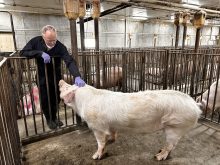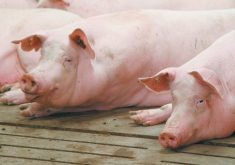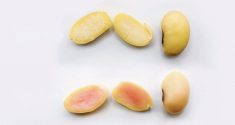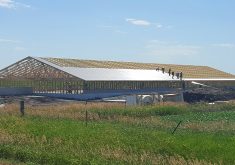NOW:
Farmers might not feel they are living in a golden era when they see those sorts of headlines. Somehow, the record highs don’t seem to have the impact that a farmer might hope for.
It’s a result of the difference between nominal and real prices, which disguises the brutal long-term reality of agricultural production, according to leading U.S. agricultural economist Darrell Good.
“Prices generally tend to decline in inflation-adjusted terms,” said Good, a University of Illinois market expert.
“There are periods when prices rise rapidly, but they do not persist. You just see a decades-long pattern of declining prices.”
Read Also

Government, industry seek canola tariff resolution
Governments and industry continue to discuss how best to deal with Chinese tariffs on Canadian agricultural products, particularly canola.
A Western Producer headline from October 1975 sagely noted “Hog prices may have peaked,” with $80 to $85 per hundredweight prices marking a rally peak that threw lean hog futures prices far above their previous peak of $40 per cwt.
Hog prices didn’t surpass $15 per cwt. from the 1920s to the early-1940s and then popped over $25 a few times between the mid-1940s and the late 1960s before beginning their surge into the $50 to $85 range that dominated the 1973-2008 period.
Lean hog futures have surged higher than $100 per cwt. a number of times in 2011 and 2013, setting new all-time records.
However, that’s only in nominal terms. Adjusted for inflation, the 1973-2008 period wasn’t a flat range but a steady trend downward. In 2008 terms, the $85 level of 1975 is actually equivalent to $340.
Today’s “record” prices are equal in inflation-adjusted terms to the hog prices of the early-to-mid-1990s.
The same applies to crop prices.
The 2008 and 2012 peaks in wheat, canola, soybeans and corn don’t seem so impressive when adjusted for inflation.
For example, Chicago wheat prices higher than $10 per bushel appears to have shot to much higher highs in 2008 than the 1970s peaks of $5 to $7 per bu. However, when adjusted for inflation, the actual value of that same futures contract is only one-third of the mid-1970s level.
With the peaks taken out of the picture, the trend for a century has been lower and lower real commodity prices, something Good expects to continue after the current period of nominal high prices has passed.
It is possible that the long-term trend could be changing. The growing world population and its increasing food demand could drive a trend of increasing real prices. And climate change could make crop and livestock production less productive, driving up prices because of smaller supplies.
“But so far we haven’t seen that materialize,” said Good.
“Until it does, I think we have to remain skeptical. The history is that production has responded and we have been able to keep up with demand without pushing real prices to new levels.”
Good said producers have responded by increasing production and lowering their per unit costs. As well, input costs have also been decreasing in real terms.
That response will likely continue if the long-term trend of lower real prices continues: producers will continue to increase productivity while demanding lower input prices.
THEN: Hog prices may have peaked
Although hog price forecasts are no more than an “educated” guess at this time, it seems safe to say they have probably reached their limit at $80 to $85 a hundredweight.
This is the opinion of Jim Dawson, marketing economist with Alberta Agriculture, who points out that even though there is not enough production increase in sight over the next six months or so to depress prices, there are other factors to consider. These include: the likelihood of a plentiful supply of lower-priced beef well into the new year; cautious buying on the part of the consumers; lower seasonal demand during the winter; and the fact that eastern Canada is coming back into pork production faster than the west.
“In view of these factors,” says Mr. Dawson, “it would be possible for prices to go back down to the low $70’s or even the high $60’s.”
Download a PDF of the original WP page here: 1975_oct02_p13


















